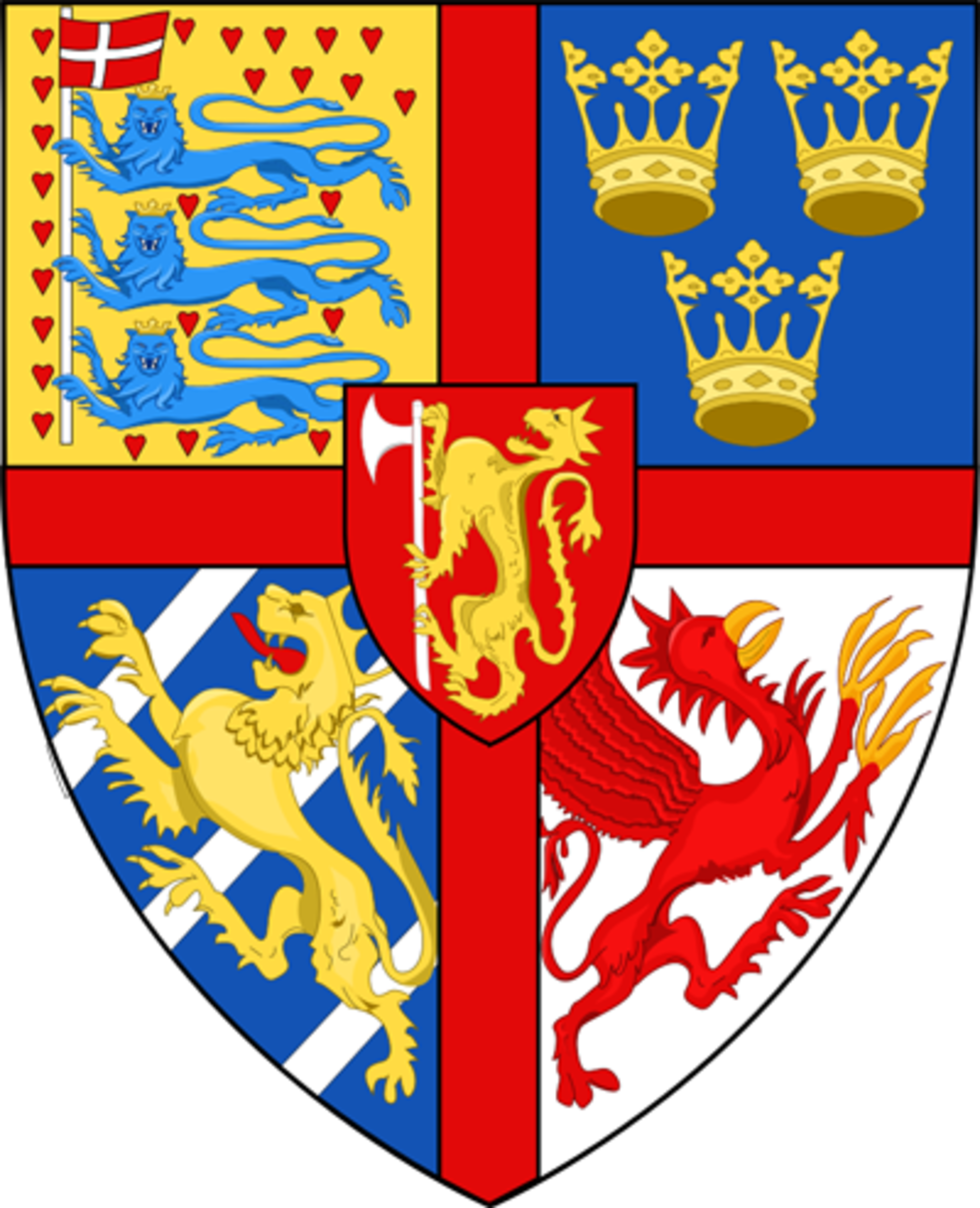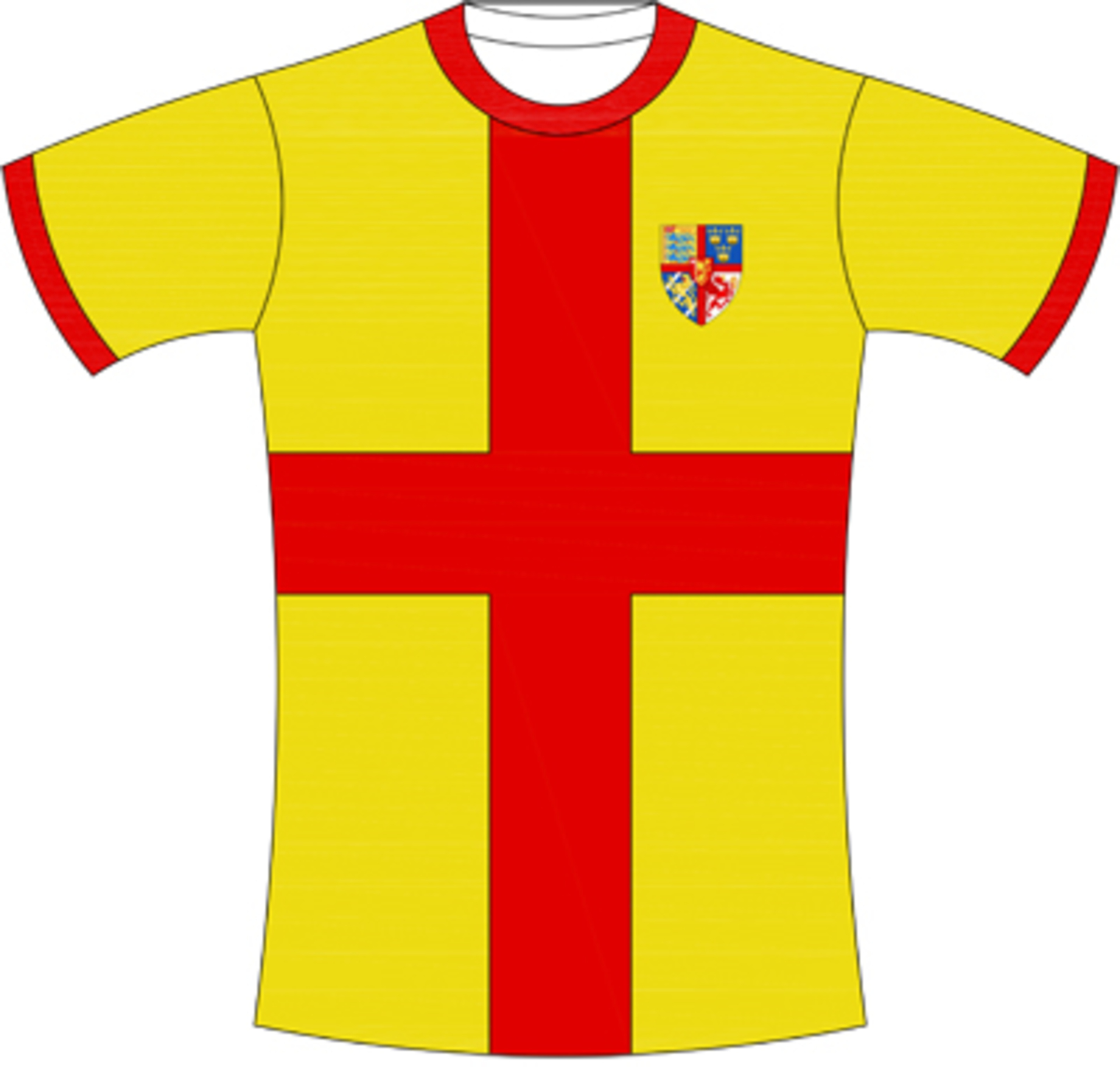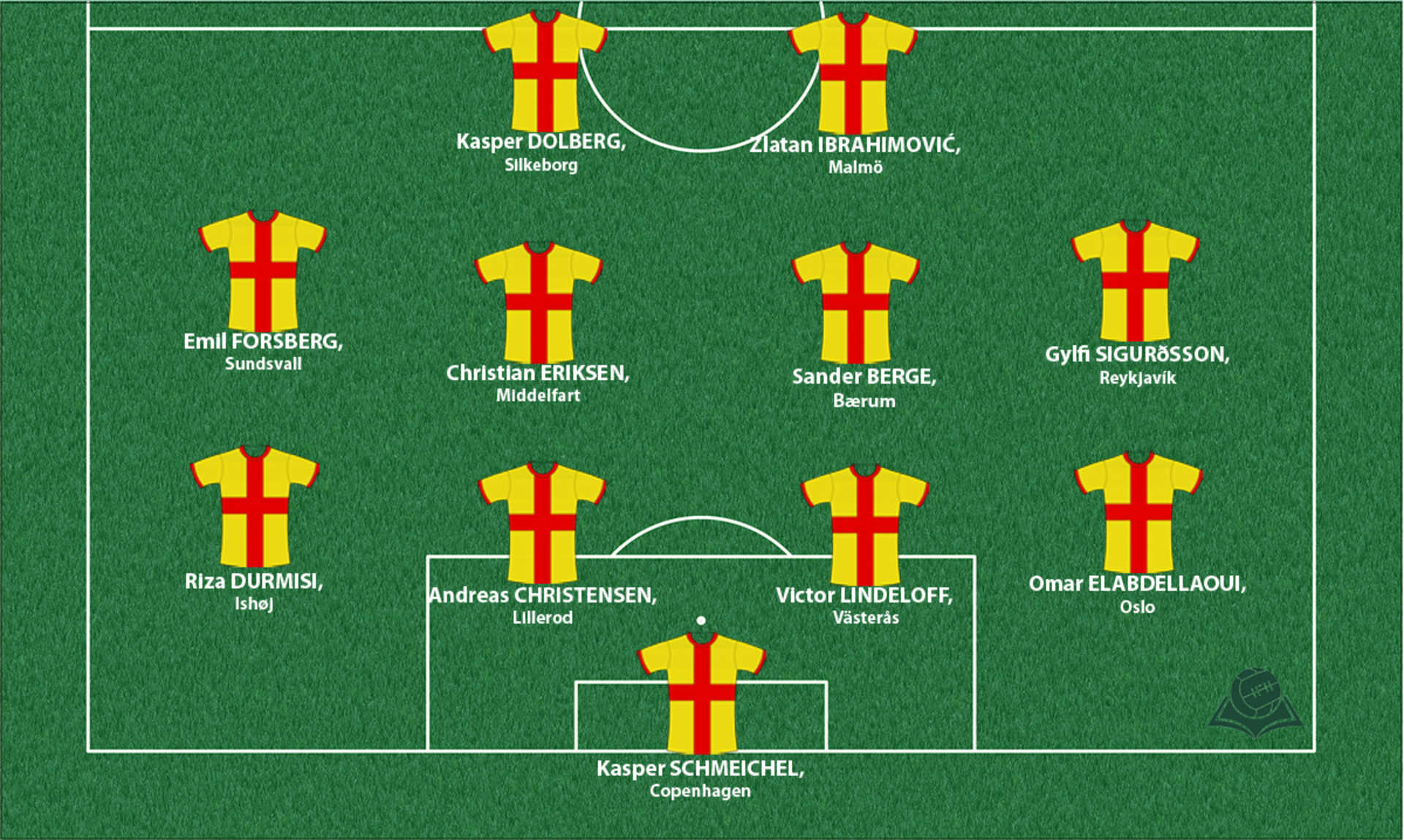The Kalmar Union
The Kalmar Union was a Scandinavian union formed at Kalmar, Sweden, in June 1397, which brought the kingdoms of Norway, Sweden, and Denmark together under a single monarch until 1523.

Coat of arms

Shirt
| Position | First name | Last name | Mjesto rođenja | Like | Dislike | |
|---|---|---|---|---|---|---|
| GK | Kasper | SCHMEICHEL | Copenhagen |
21 |
1 |
|
| GK | Rune | JARSTEIN | Porsgrunn |
0 |
0 |
|
| DC | Andreas | GRANQVIST | Påarp |
0 |
0 |
|
| DC | Jannik | VESTERGAARD | Copenhagen |
1 |
0 |
|
| DC | Raganr | SIGURðSSON | Reykjavík |
0 |
0 |
|
| DC | Simon | KJAER | Horsens |
1 |
0 |
|
| DRC | Andres | CHRISTENSEN | Allerød |
6 |
1 |
|
| DRL | Jens | STRYGER LARSEN | Sakskøbing |
0 |
0 |
|
| DR | Mikael | LUSTIG | Umeå |
1 |
0 |
|
| DR/AMR | Omar | ELABDELLAOUI | Oslo |
0 |
0 |
|
| DL | Ludwig | AUGUSTINSSON | Stockholm |
1 |
0 |
|
| DL | Riza | DURMISI | Ishøj |
0 |
0 |
|
| DC/DMC | Harvard | NORDTVEIT | Vats |
0 |
0 |
|
| DC/DMC | Victor | LINDELOF | Västerås |
4 |
0 |
|
| DMC | Lasse | SCHöNE | Glostrup |
3 |
0 |
|
| MC | Aaron | GUNNARSSON | Akureyri |
3 |
0 |
|
| MC | Pierre | HOJBJERG | Copenhagen |
4 |
0 |
|
| MC | Sander | BERGE | Bærum |
2 |
1 |
|
| MRLC | Birkir | BJARNASON | Akureyi |
2 |
0 |
|
| AMC | Christian | ERIKSEN | Middelfart |
11 |
2 |
|
| AMC | Gylfi | SIGURðSSON | Reykjavík |
3 |
1 |
|
| AMRLC | Daniel | WASS | Gladsaxe |
2 |
0 |
|
| AMRLC | Martin | ØDEGAARD | Drammen |
3 |
0 |
|
| AMRL | Emil | FORSBERG | Sundsvall |
3 |
0 |
|
| AMRL | Emre | MOR | Brönshöj |
4 |
1 |
|
| AMRL | Sam | LARSSON | Göteborg |
2 |
0 |
|
| FRLC | Viktor | FISCHER | Aarhus |
4 |
0 |
|
| FRLC | Yussuf | POULSEN | Copenhagen |
4 |
0 |
|
| FC | Andreas | CORNELIUS | Copenhagen |
1 |
0 |
|
| FC | John | GUIDETTI | Stockholm |
2 |
0 |
|
| FC | Kasper | DOLBERG | Silkeborg |
5 |
1 |
|
| FC | Zlatan | IBRAHIMOVIĆ | Malmö |
19 |
4 |
(Today part of Sweden, Norway, Denmark and Iceland)
The Treaty of Kalmar (1397) saw Denmark, Norway, and Sweden enter a personal union which instituted a mutual plan of defence, leaving each individual kingdom a broad political and governmental autonomy. Nevertheless, their domestic and foreign policies were governed by their mutual monarch. The underage nephew of Margaret, the queen of Denmark and the widow of the late king of Norway, Boguslav of Pomerania (ruled 1396 – 1439), who then took the name Eric, was chosen to be king. Nevertheless, Margaret managed to retain control over the Union.The main reason for the founding of the Union was the desire of Scandinavian aristocracy to prevent the expansion of Hansa influence in the Baltics. Sweden and Denmark were also connected by religion, language, social structures, together with a certain awareness of the unity of the “north.”
The system was relatively stable and well balanced until the death of Margaret (1412), after which it became the instrument of Danish predominance, and was maintained, despite the conflicts and occasional breaks, until 1523 and the Swedish uprising. The main reasons for the Union’s failure and falling apart lie in the continuous struggles between the monarch, who wanted a strong and unified state, on the one side, and Swedish and Danish aristocracy, who were opposed to such policies, on the other.In addition to that, the Swedes were not satisfied with the continuous wars in Schleswig, Holstein, Macklenburg, and Pomerania, which disrupted Swedish export to continental Europe. The Union’s falling apart left Sweden in a precarious geographical position. Three Danish provinces lay north of Sund, a narrow area between the provinceHalland and the Norwegian province Bohuslan was the only access to the North Sea for Sweden, and the wide mouth of the Göta was their only corridor towards the west.
Sources
- Felipe FERNANDEZ-ARMESTO, Narodi Europe, Zagreb, 1997.
- Grupa autora, Povijest: Doba apsolutizma (17. stoljeće), knjiga X., Zagreb 2008.
- ''Kalmar Union'', https://en.wikipedia.org/wiki/Kalmar_Union
- ''Kalmar Union'', https://www.britannica.com/place/Kalmar-Union
- 1477 Kalmarska Unija: https://en.wikipedia.org/wiki/Coat_of_arms_of_Denmark
